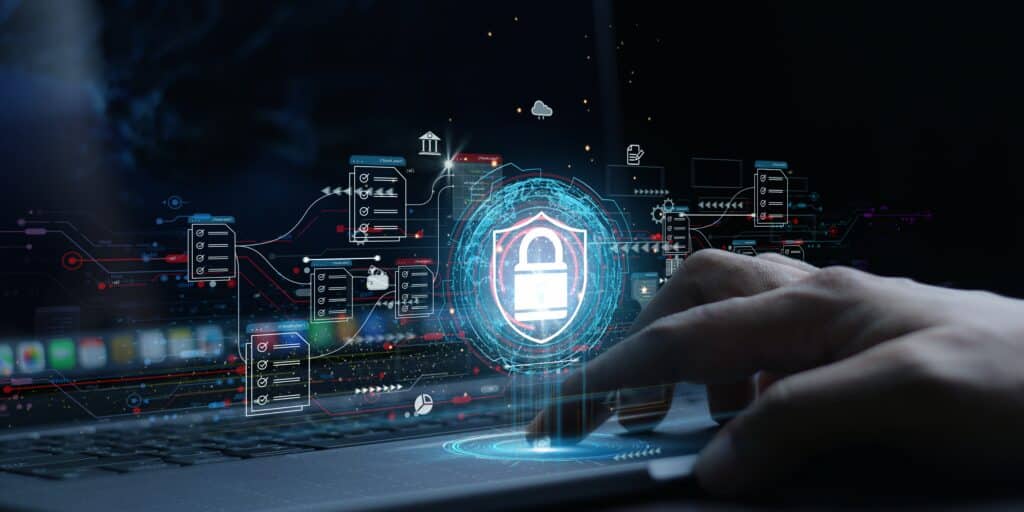Welcome to an insightful exploration of Cuerva’s pivotal role within the eFORT project, aimed at fortifying the security and resilience of European energy networks. In this article, we invite you to join us on a journey through Cuerva’s contributions to this groundbreaking initiative. We’ll delve into the innovative solutions and collaborative endeavours driving the enhancement of energy grid security, showcasing Cuerva’s commitment to innovation and sustainability in the energy transition.
As a valued partner in the eFORT project consortium, Cuerva brings expertise, dedication, and a user-centred approach to the table. Throughout this article, we’ll uncover Cuerva’s multifaceted engagement, from pinpointing vulnerabilities to implementing robust security measures. Join us as we explore how Cuerva’s involvement in the eFORT project is shaping a more resilient energy future for Europe.

The objective of the European-funded Project eFORT is clear: enhance the resilience and security of European energy networks. This entails strengthening defences against potential failures, cyber-attacks, and privacy breaches.
To achieve this objective, CUERVA is deploying a comprehensive suite of solutions designed to identify, prevent, and remediate any vulnerabilities within the system. What’s noteworthy is that these efforts will not remain confined within the confines of closed doors. Instead, they intend to showcase these solutions at various levels, including Transmission System Operators (TSOs), Distribution System Operators (DSOs), and end users alike.
As mentioned above, Cuerva plays a pivotal role in this project. They are not mere spectators but active participants, deeply involved in the implementation process. From pinpointing system vulnerabilities to establishing sophisticated security measures, their commitment spans every aspect of the project. Ultimately, their aim is to ensure the energy grid’s robustness, reliability, and inclusivity for all stakeholders.
Cuerva’s engagement in the project operates on multiple fronts. Within the realm of Internet of Things (IoT), their focus lies in assessing vulnerabilities within the CUERVA Living Lab. Using a methodical approach, they identify potential weaknesses and develop strategies to mitigate attacks on distributed resources. This entails crafting action plans to preemptively thwart such threats and devising cybersecurity algorithms tailored to address specific issues. Additionally, they simulate various failure scenarios stemming from these attacks to evaluate the power grid’s responsiveness and resilience.
- On the user front, their responsibilities include overseeing user management and ensuring secure access to the system. Moreover, they actively monitor user activity and facilitate the seamless integration of custom Distribution System Operator (DSO) systems into microgrids and network segments, enhancing overall security and operational efficiency.
- At the industrial level, they conduct rigorous testing of the SecureBox within the framework of the Intrusion Detection System/Intrusion Prevention System (IDS/IPS). This involves closely monitoring the status of smart meters, including the timely deployment of security patches and the prompt detection of alarms and emergency functions. By seamlessly integrating these components into existing infrastructures, they ensure robust monitoring capabilities and enable swift responses to potential threats.

To tackle the identified challenges and leverage the associated opportunities, Cuerva is adopting a comprehensive strategy that addresses both user-centric aspects and critical infrastructure, including digital substations. This approach is aimed at fortifying the security and privacy of communication networks, modernising distribution automation infrastructure, and developing cutting-edge tools for threat detection and response.
Key Challenges and Opportunities at the User Level with High Distributed Energy Resources (DER) Penetration:
- – Addressing privacy and security concerns within communication networks.
- – Reinforcing subsystems within Power Electric Systems to accommodate the presence of distributed resources.
- – Upgrading distribution automation infrastructure to bolster security measures.
Key Challenges and Opportunities related to Critical Infrastructure and Digital Substations:
- – Conducting a thorough analysis of threats and assessing the impact of attacks such as malicious documents (maldocs), Remote Access Trojans, or IoT malware on system stability.
- – Identifying and evaluating security technologies applicable to digital substations to enhance the overall robustness of automation systems.
- – Updating IoT devices in the network, including devising plans for renewal and scalability.
- – Ensuring seamless connectivity of remote access points, current transformers (CT), and substations.
- – Developing tools for detecting and responding to attacks or intrusions.
- – Strengthening security measures in automated digital substations.- Implementing automated response mechanisms to mitigate potential threats.

In the upcoming months, Cuerva will initiate the provision of distribution network data to our technology developer partners. This real-world data will serve as the foundation for training our Intrusion Detection System (IDS) device. An IDS is a cybersecurity tool that monitors network traffic or system events to detect and prevent malicious activities. Our IDS device will operate in both network (NIDS) and host (HIDS) modes, with capabilities for both detection and prevention. It employs methods such as signature analysis and behaviour monitoring to safeguard against threats.
Cuerva will leverage this real data to train our IDS device, comparing it with compromised fictitious data to enhance its efficacy. Subsequent communications will delve into the detailed development and implementation plans for these solutions, all within the overarching framework of the eFORT project.
We firmly believe that these efforts will lead to a significant strengthening of our infrastructure, both physical and data-related, as we prepare for future challenges. These developments will serve as a cornerstone, setting precedents that can be applied across other substations and segments of the electric distribution network.
Contact us
Follow us on:
